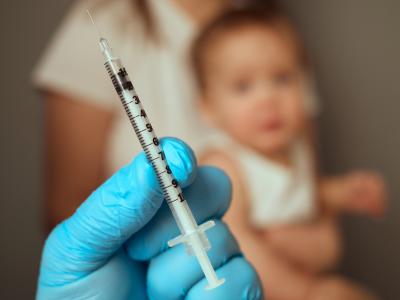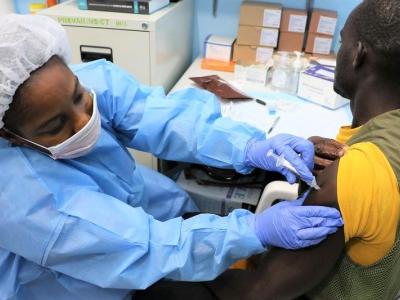Saudi Arabia reports two MERS cases, one fatal
Saudi Arabia's Ministry of Health (MOH) announced two new Middle East respiratory syndrome coronavirus (MERS-CoV) infections today, one of them fatal.
Few details were available about the patients, according to a statement in Arabic posted on the MOH Web site. Both of them are from Riyadh. One is a 55-year-old man with a chronic health condition who died from his infection, and the other is a 51-year-old man who also suffers from an underlying condition and is hospitalized in an intensive care unit.
No other details were posted, such as any possible exposure to animals.
The two new cases bump Saudi Arabia's MERS total to 150 cases, of which 62 were fatal. The country has by far the most cases of any nation reporting infections.
So far the World Health Organization (WHO) has yet to confirm three previous cases reported recently by Saudi Arabia. They involve a 56-year-old woman from Riyadh, a 58-year-old man from Al-Ahsa, and an 81-year-old woman from Riyadh who died. The agency's latest MERS count, updated Feb 28, is 184 cases, including 80 deaths.
Mar 5 Saudi MOH notice
Saudi MOH MERS-CoV page with case count
Feb 28 WHO update on MERS-CoV
Study: vCJD blood test accurate enough for large-scale screening
In a large trial, a test to detect the abnormal prion protein associated with variant Creutzfeldt-Jakob disease (vCJD) performed well enough to conclude that it can be used to screen populations at risk for the disease, scientists reported in JAMA Neurology.
Variant CJD, a degenerative brain disease, is the human counterpart of bovine spongiform encephalopathy (BSE, or mad cow disease), which, the report notes, may have infected as many as 3 million cattle in the United Kingdom.
The authors, led by Graham S. Jackson, PhD, of the University College of London Institute of Neurology, used the test on blood samples from 5,000 US blood donors, 200 healthy British donors, 352 patients with nonprion neurodegenerative diseases, 105 patients deemed likely to have prion diseases, and 10 patients with confirmed vCJD.
The test showed 100% specificity (no false-positives) in the US donors (who were presumed to be free of prion disease) and in the healthy British donors. Likewise, it produced no false-positives among the patients with nonprion neurodegenerative diseases.
Among patients believed likely to have a prion disease, two who had sporadic CJD tested positive (98.1% specificity; 95% confidence interval [CI], 93.3% to 99.8%). And in a small set of samples from unaffected persons and patients known to have vCJD, the test showed 70% sensitivity (95% CI, 34.8% to 93.3%), which reconfirmed previous findings.
The authors said the test performed well enough to justify using it to screen a large sample of the British population and at-risk groups to estimate the prevalence of blood prions among British blood donors. Such an estimate would help policy makers decide whether routine vCJD screening is needed for blood, tissue, and organ donations and for patients facing high-risk surgical procedures.
Mar 3 JAMA Neurology abstract
Mar 3 JAMA press release
Listeria, Vibrio top list of deadliest foodborne pathogens
In terms of quality-adjusted life years (QALYs) lost per illness, Listeria monocytogenes and Vibrio vulnificus far and away top the list of deadliest foodborne pathogens, according to a new study in Foodborne Pathogens and Disease.
University of Florida and US Department of Agriculture researchers studied 14 of the commonest US foodborne pathogens and ranked them by QALYs, which they say "provide a means of comparing relative risk from diverse health outcomes."
L monocytogenes and V vulnificus both were associated with more than 5,800 QALYs lost per 1,000 cases. That ranked far worse than the next pathogens on the list, with 125 QALYs lost per 1,000 cases for Toxoplasma gondii, 26 for Escherichia coli O157:H7, 16 for both Salmonella and Campylobacter, and 14 for Yersinia enterocolitica.
The remaining seven pathogens were estimated to cause less than 5 QALYs lost per 1,000 cases, the researchers said. The 14 pathogens combined cause more than 61,000 lost QALYs each year, the investigators found, and called their numbers "likely conservative."
Mar 3 Foodborne Pathog Dis abstract
Experimental drug protects macaques against Marburg
Scientists have shown for the first time that a small-molecule drug candidate protects nonhuman primates from the Marburg virus, according to a study in Nature.
Researchers from the US Army Medical Research Institute of Infectious Diseases (USAMRIID) and their industry partners found that the experimental agent BCX4430 protected cynomolgous macaques from Marburg virus infection when administered by injection as long as 2 days after infection.
They further noted that BCX4430, a synthetic adenosine analogue, protected mice against both Ebola and Rift Valley fever viruses, two additional filoviruses. Also, the drug candidate protected guinea pigs exposed to Marburg virus either by injection or by inhalation, with the drug protecting in the latter situation even when given 3 days after infection.
In the macaque arm of the study, the investigators treated groups of six infected macaques beginning either 1, 24, or 48 hours after infection with Marburg virus. One animal in the 1-hour-post-infection group died, while all other macaques survived. Untreated monkeys, in contrast, all died within 10 days of infection.
First author Travis K. Warren, PhD, of USAMRIID, said in a USAMRIID press release that the drug candidate acts by interfering with the internal "machinery" of the Marburg virus, preventing it from replicating its genetic material. The authors said that the agent exhibits broad-spectrum antiviral activity against bunyaviruses, arenaviruses, paramyxoviruses, and coronaviruses as well.
Mar 2 Nature abstract
Mar 3 USAMRIID press release
South Korea notes high-path test results for outbreak H5N8 strain
The H5N8 strain of avian influenza responsible for at least 26 outbreaks in South Korean poultry and the death of more than a half million birds has been shown by several measures to be highly pathogenic, according to a report posted yesterday by the World Organization for Animal Health (OIE).
Dr TaeYung Kim, director general of the Livestock Policy Bureau of the country's Ministry for Food, Agriculture, Forestry & Fisheries, said in the report that outbreak viruses the agency tested have a series of basic amino acids at the hemagglutinin cleavage site that confirms they are highly pathogenic to chickens. They also have an intravenous pathogenicity index of 3.0, and the threshold for high pathogenicity is 1.2.
In addition, scientists with the country's Animal and Plant Quarantine Agency (QIA) injected 10 6-week-old chickens intravenously with 0.1milliliters of 1/10 diluted H5N8 virus, and all the birds died within 24 hours, the report said.
The report also notes that the QIA submitted genetic information from the viruses to the publicly accessible GenBank database.
Mar 4 OIE report










